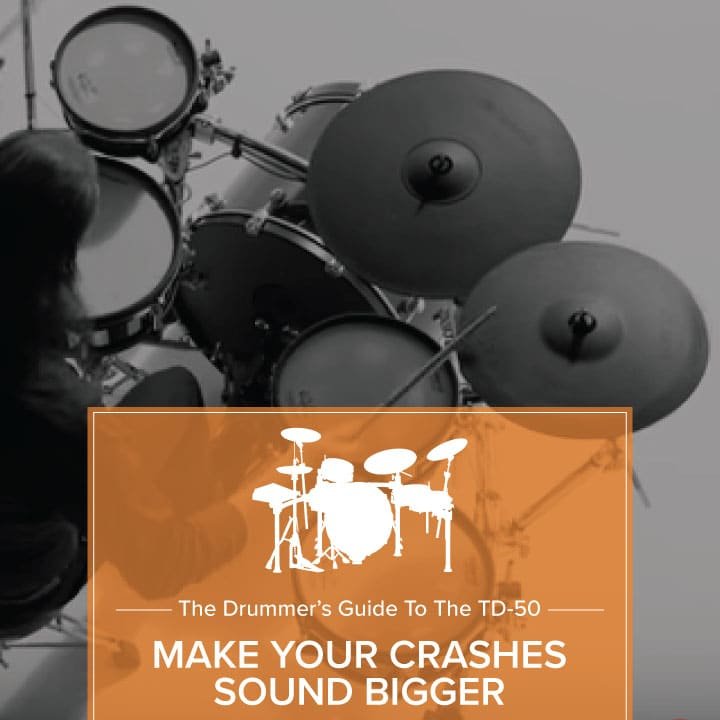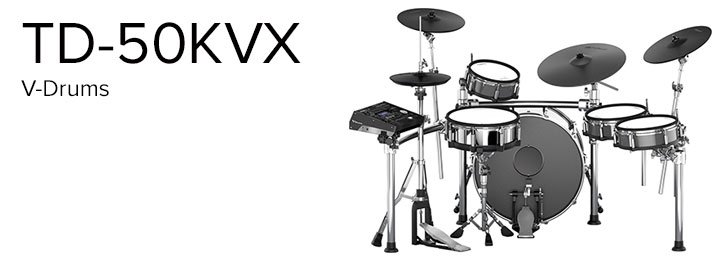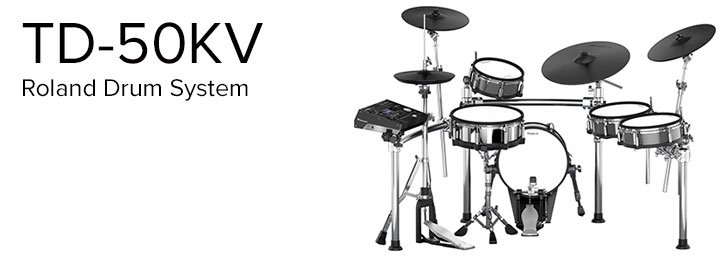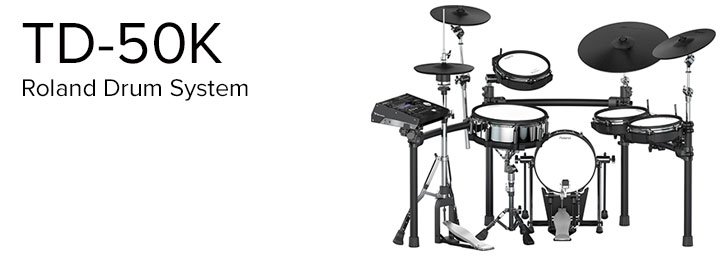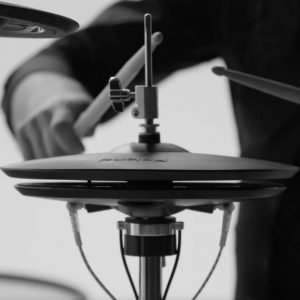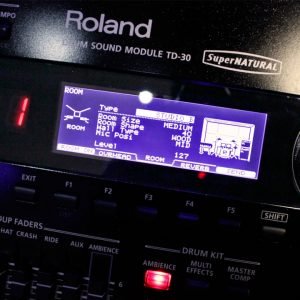Crash cymbals are used to punctuate and accent musical phrases so creating a great sound is vital.
Roland TD-50 V-Drums crash sounds are simple to modify. In this article we’ll cover how to enhance crashes to make them as impressive as possible.
Crash cymbals come in all kinds of shapes and sizes and with the TD-50, you are certainly not limited for choice!
For emphasising or accenting a moment in a song, marking the end of a fill, crashes are used to punctuate music.
As an excellent way to add colour and spice to your drum sound, a great sounding crash is vital.
When it comes to creating your own unique crash cymbal sounds, the TD-50 offers nearly limitless options.
Building up a library of sounds will give you plenty of tones to choose from. The other bonus is, you won’t have to worry about hiring a warehouse to store all your cymbals!
Find the ideal crash sound for the music
Crash cymbals might sound great in isolation, but as soon as they are played in context with other instruments in a mix, their power can quickly be reduced.
To counter these problems, you can adjust the type of cymbals, microphone position and their brightness in the TD-50 just like in an acoustic recording situation.
There are also many other things you can achieve that are impossible with conventional cymbal recording.
Some of the cymbal characteristics that you can adjust independently of each other in the TD-50 are:
- Size of the Cymbal
- Sustain of the cymbal
- Thickness of the Cymbal
- Pitch of the Cymbal
- Ping type and amount
You can add sizzles to cymbals, increase cymbal size, create your own custom cymbal stacks of two or more cymbals and even pitch bend cymbals.
This last feature you could use to simulate the increase in pitch that occurs, when a gong is dipped in water.
Contributed by Simon Ayton for Roland Corporation Australia
1. Choose a More Powerful TD-50 Cymbal Sound
Bigger cymbals naturally give a more powerful sound with longer sustain.
In order to speed up the editing process, choose a factory sound that’s as close as possible to what you imagine first.
It’s much easier to make a big cymbal sound smaller if you need to, rather than trying to make a thin cymbal sound more powerful later.
[INSTRUMENT] | F1 (INST) | R1 (Inst)
Try: Inst 157 Power Medium CrE.
2. Increase the TD-50 Cymbal Size
Bigger cymbals have a lower fundamental pitch and longer sustain. In contrast, small cymbals are bright and decay quickly, making them very good for adding colourful accents to a rhythm.
Ride cymbals tend to start from 20”, splash cymbals from 6”-12” and crashes anywhere from 16”- 20”.
There are many boutique and EFX style cymbals available. These types buck “standard” size trends and allow many new cymbal sounds for adding texture and excitement to a drum performance.
In the TD-50, there are a range of vastly different cymbals.
Every TD-50 cymbal can be modified from 1” up to 40”, so knowing the standard sizes of cymbals and experimentation is the key to coming up with a memorable crash sound.
[INSTRUMENT] | F1 (INST) | R2 (Size) 1-40
Try: 22.
3. Increase the TD-50 Crash Cymbal Thickness
Changing the thickness in the Roland TD-50 is the best way to increase the power of any cymbal.
Thicker and heavier cymbals have more sustain and power whereas thinner cymbals can cut through and get out of the way quicker.
Thicker cymbals tend to sound more crotale-like and can also simulate the proximity effect of moving the microphone closer.
Cymbals used for metal or heavy rock are thicker and have a strong bell sound, but they may not suit every song or style of music.
To suit any musical style, it’s very common for session recording drummers to have a range of cymbals in their cymbal bag.
Thick, thin, light and dark crashes and effects cymbals suit different styles they may be asked to play.
Having a range of acoustic cymbals can get expensive.
Luckily, paper thin to super thick cymbals are a simple adjustment away in the TD-50 and you can even stack different types of cymbals for completely new sounds.
[INSTRUMENT] | F1 (INST) | R3 (Thickness) THIN5-THICK+5
Try: THICK+5.
4. Modify the TD-50 Cymbal Sustain
There are several ways to modify cymbal sustain in the TD-50.
For dramatic attack and release changes, use the transient tool.
There’s also a dedicated decay setting in the advanced settings tab.
Cymbal sizzles of various types can be applied to crash cymbals in the TD-50 too which effectively add sustain to any cymbal sound. Sizzles are very common in Jazz drumming for sustained ride sounds during a ballad, for example.
If it’s a shorter sustain you’re after, an intuitive way is to muffle the sound using virtual tape, just as you would on an acoustic cymbal.
[INSTRUMENT] | F2 (BASIC 1) | R1 (Muffling) OFF-TAPE19
Try: TAPE3.
5. Move the TD-50 Cymbal Microphone
As with acoustic cymbal recording, microphone placement is adjustable in the TD-50 and influences the sound significantly.
For china cymbals and big aggressive crash cymbal sounds in rock music, move the microphone position near the edge to give a darker, almost distorted, harsh and coloured sound.
A microphone placed directly above a cymbal pointing downwards tends to give a brighter, smoother and more open sound.
[INSTRUMENT] | PAGE DOWN | F1 (MIC POS) | R2 (Mic Position) OUTSIDE4-INSIDE4
Try: INSIDE2.
6. Add Some Room Ambience to the TD-50 Cymbal Sounds
The TD-50 contains both a room ambience simulator, as well as a studio-type reverb unit along with three powerful multi-effects generators.
All of the TD-50 effects units are fully editable and can be different for each kit patch.
For recreating classic studio effects, the multi-effects and reverb units are perfect.
The room simulator is ideal for adding size and a sense of location to sounds, while keeping them as natural as possible.
Each element of the kit can have its own mix of room sound, determined by the ‘SEND’ amount found on the second page of the AMBIENCE simulator.
This ability to choose which elements are picked up in the room mics is impossible with a conventional drum kit recording. Typically, when all elements of the kit are captured together with an acoustic kit, sounds cannot be isolated.
[AMBIENCE] | F1 (ROOM ON) | R1 (ROOM) –INF-+6
Try: +6.
Related Articles

